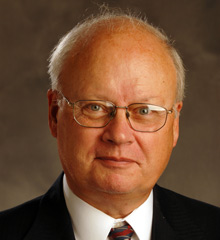Theological Themes of 2 Timothy
Revised by Mary Hinkle Shore, 10/23
Christ
Four major christological titles appear in the Pastoral EpistlesThe Pastoral Epistles are the New Testament letters of 1 and 2 Timothy and Titus. They are described as pastoral because they are addressed to individual persons rather than churches; they deal with matters of leadership and church governance. More: “Christ,” “Lord,” “Savior,” and “Mediator.” The title “Son of God,” used often in the seven undisputed letters of PaulThe Apostle Paul, originally known as Saul of Tarsus, was the author of several New Testament letters and the founder of many Christian communities. More, does not appear. There is an implicit affirmation of Christ’s preexistence and incarnationIncarnation literally means “embodied in flesh.” It is a Christian doctrine, based on the witness in John’s Gospel, that God’s Word was made flesh in the person of Jesus Christ. The Apostles’ and Nicene Creeds confess the central importance of the incarnation of Jesus. More (2 TimothyThe companion on Paul’s later journeys for whom two pastoral epistles are named. More 1:9-10; see also 1 Timothy 3:16; Titus 2:11), his true humanity is maintained (2 Timothy 2:8; see also 1 Timothy 2:5; 6:13), and his death is acknowledged (2 Timothy 2:11; see also 1 Timothy 2:6; Titus 2:14). He has been exalted to heaven and reigns in the present era (2 Timothy 1:10; 2:12; see also 1 Timothy 3:16). Finally, he will appear at the end of time (2 Timothy 4:8; see also 1 Timothy 6:14), when he will judge both the living and the dead (2 Timothy 1:18; 4:1, 8).
Salvation
People commit “sins” (2 Timothy 3:6; see also 1 Timothy 1:15; 5:22, 24) due to serving the self and its passions (2 Timothy 3:2-5; see also Titus 2:12). The result is a life leading away from eternal life and toward judgment and eternal death. SalvationSalvation can mean saved from something (deliverance) or for something (redemption). Paul preached that salvation comes through the death of Christ on the cross which redeemed sinners from death and for a grace-filled life. More consists primarily of the divine rescue of individuals from mortality–with its sins, ignorance, and unbelief–for life in the eternal and heavenly kingdom of GodThe kingdom (reign) of God is a central theme of Jesus’ teaching and parables. According to Jesus this reign of God is a present reality and at the same time is yet to come. When Christians pray the Lord’s Prayer, they ask that God’s kingdom… More (2 Timothy 1:10; 4:18). Christ gave himself as a ransom for all (see 1 Timothy 2:6), thereby bearing the divine judgment against sins for the benefit of others (see Titus 2:14). Being raised from death, he “abolished death and brought life and imperishability to light” (2 Timothy 1:10), exposing life and immortality for all to see as a possibility for themselves. Finally, he will come to rescue his people and save them for his heavenly kingdom (2 Timothy 4:18).

